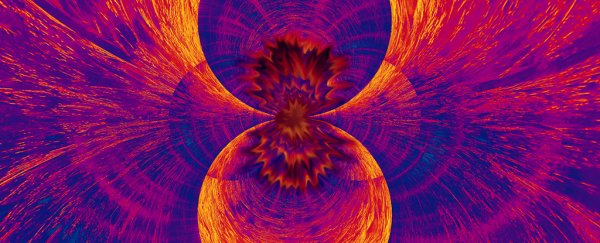In quantum physics, the entanglement of particles describes a relationship between their fundamental properties that can't have happened by chance. This could refer to states such as their momentum, position, or polarisation.
Knowing something about one of these characteristics for one particle tells you something about the same characteristic for the other.
Think of a pair of gloves. If you found a right glove alone in your drawer, you can be certain the missing glove would fit your left hand. The two gloves could be described as entangled, as knowing something about one would tell you something important about the other that isn't a random feature.
In fashion, this concept isn't all that strange. But the concept poses a problem for quantum mechanics.
Does quantum entanglement work with 'reality'?
The physicists Niels Bohr and Werner Heisenberg argued an object's state only truly existed once it became associated with a measurement, which meant somebody needed to observe it experimentally. Until then, its nature was merely a possibility.
To other physicists, such as the famous Albert Einstein and Erwin Schrödinger, this was as preposterous as saying a cat inside a box is neither alive nor dead until you look.
Finally two physicists Boris Podolsky and Nathan Rosen collaborated with Einstein to come up with a thought experiment, where two objects interact in some way.
By measuring one of them, we might be able to work out some of its partner details without needing to measure it directly, thanks to its 'entangled' history.
"Spooky action at a distance"
In response to this dilemma (now called the EPR or Einstein-Podolsky-Rosen paradox) Bohr suggested that the state of both objects simply became 'real' at the same time, as if they instantly swapped details on this experimental intrusion across a distance.
Einstein dismissed this idea as a 'spooky action', claiming on multiple occasions that "God does not play dice".
Decades later, Bohr's ideas still stand strong, and the strange nature of quantum entanglement is a solid part of modern physics. Physics really is fundamentally 'spooky' after all.
All topic-based articles are determined by fact checkers to be correct and relevant at the time of publishing. Text and images may be altered, removed, or added to as an editorial decision to keep information current.
